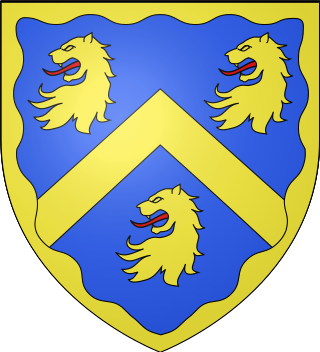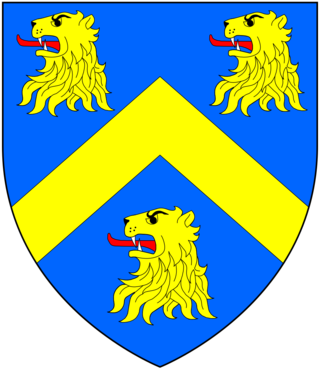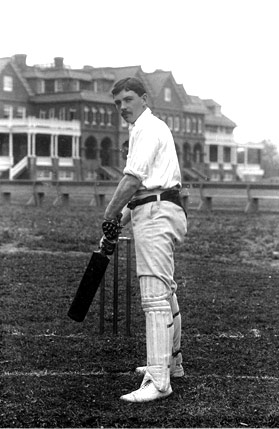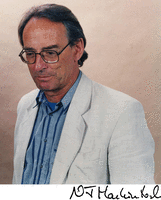John Seymour was an English cricketer active from 1904 to 1931 who played for Northamptonshire (Northants) and Sussex. He was born in Brightling, Sussex on 24 August 1881 and died in Daventry on 1 December 1967. He appeared in 136 first-class matches as a righthanded batsman who bowled left-arm orthodox spin. He scored 3,430 runs with a highest score of 136 not out, his only century, and took 113 wickets with a best performance of six for 58. [1]
John Augustine Snow is a retired English international cricketer who played for Sussex from 1961 to 1977 and represented England in 49 Test matches. He was born in Peopleton, Worcestershire.

Duke of Somerset, from the county of Somerset, is a title that has been created five times in the peerage of England. It is particularly associated with two families: the Beauforts, who held the title from the creation of 1448, and the Seymours, from the creation of 1547, in whose name the title is still held. The present dukedom is unique, in that the first holder of the title created it for himself in his capacity of Lord Protector of the Kingdom of England, using a power granted in the will of his nephew King Edward VI.

Charles Wyndham, 2nd Earl of Egremont, PC, of Orchard Wyndham in Somerset, Petworth House in Sussex, and of Egremont House in Mayfair, London, was a British statesman who served as Secretary of State for the Southern Department from 1761 to 1763.

Baron Leconfield, of Leconfield, in the East Riding of the County of York, is a title in the Peerage of the United Kingdom. It was created in 1859 for Col. George Wyndham (1787–1869). He was the eldest illegitimate son and adopted heir of George Wyndham, 3rd Earl of Egremont (1751–1837), from whom he inherited Petworth House in Sussex, Egremont Castle and Cockermouth Castle in Cumbria and Leconfield Castle in Yorkshire, all formerly lands of Josceline Percy, 11th Earl of Northumberland (1644–1670), inherited by Charles Seymour, 6th Duke of Somerset (1662–1748), on his marriage to the Percy heiress Elizabeth Percy (1667–1722) and inherited as one of the co-heirs of his son Algernon Seymour, 7th Duke of Somerset, 1st Earl of Egremont (1684–1750), by the latter's nephew Sir Charles Wyndham, 4th Baronet (1710–1763), of Orchard Wyndham in Somerset, who inherited by special remainder the earldom of Egremont. The 1st Baron's eldest son, the second Baron, represented West Sussex in the House of Commons as a Conservative. He was succeeded by his eldest son, the third Baron, who served as Lord Lieutenant of Sussex from 1917 to 1949. The latter's nephew, the sixth Baron, served as Private Secretary to Prime Minister Harold Macmillan from 1957 to 1963. In 1963, four years before he succeeded his father in the barony of Leconfield, the Egremont title held by his ancestors was revived when he was raised to the peerage as Baron Egremont, of Petworth in the County of Sussex. As of 2017 the titles are held by his son, the seventh Baron. Known as Max Egremont, he is a biographer and novelist.

Petworth House in the parish of Petworth, West Sussex, England, is a late 17th-century Grade I listed country house, rebuilt in 1688 by Charles Seymour, 6th Duke of Somerset, and altered in the 1870s to the design of the architect Anthony Salvin. It contains intricate wood-carvings by Grinling Gibbons. It is the manor house of the manor of Petworth. For centuries it was the southern home for the Percy family, earls of Northumberland.
John Small was an English professional cricketer who played during the 18th century and had one of the longest careers on record. Born at Empshott, Hampshire, he is generally regarded as the greatest batsman of the 18th century and acknowledged as having been the first to master the use of the modern straight bat which was introduced in the 1760s. He probably scored the earliest known century in important cricket. The strength of the Hambledon/Hampshire team during Small's prime years can be seen in the team being rated the (unofficial) Champion County in 10 seasons: 1766–1771, 1776–1777, 1779 and 1783. He died at Petersfield, where he was in residence for most of his life and where he established businesses.

The 1744 cricket season in England is remembered for the earliest known codification of the Laws of Cricket. This was drafted by members of several cricket clubs, though the code was not published until 1755. Much of its terminology such as no ball, over, toss, umpire and wicket remain in current use. The season is also notable for the two earliest known surviving match scorecards. The second of those matches, played on Monday, 18 June, was a celebrated event in which a Kent county team challenged an England team at the Artillery Ground, Kent winning by one wicket.
Arthur Haygarth was a noted amateur cricketer who became one of cricket's most significant historians. He played first-class cricket for the Marylebone Cricket Club and Sussex between 1844 and 1861, as well as numerous other invitational and representative teams including an England XI and a pre-county Middlesex. A right-handed bat, Haygarth played 136 games now regarded as first-class, scoring 3,042 runs and taking 19 wickets with his part-time bowling. He was educated at Harrow, which had established a rich tradition as a proving ground for cricketers. He served on many MCC committees and was elected a life member in 1864.
Granville Edward Bromley-Martin was an English first-class cricketer: right-handed batsman and occasional right-arm slow bowler who played for Oxford University and Worcestershire around the turn of the 20th century.

Earl of Egremont was a title in the Peerage of Great Britain. It was created in 1749, along with the subsidiary title Baron of Cockermouth, in Cumberland, for Algernon Seymour, 7th Duke of Somerset, with remainder to his nephews Sir Charles Wyndham, 4th Baronet, of Orchard Wyndham, and Percy Wyndham-O'Brien. The Duke had previously inherited the Percy estates, including the lands of Egremont in Cumberland, from his mother Lady Elizabeth Percy, daughter and heiress of Joceline Percy, 11th Earl of Northumberland. In 1750 Sir Charles Wyndham succeeded according to the special remainder as second Earl of Egremont on the death of his uncle. His younger brother Percy Wyndham-O'Brien was created Earl of Thomond in 1756.

Little Shop of Horrors is a 1986 American horror comedy musical film directed by Frank Oz. It is an adaptation of the 1982 off-Broadway musical of the same name by composer Alan Menken and writer Howard Ashman, which is itself an adaptation of the 1960 film The Little Shop of Horrors by director Roger Corman. The film, which centers on a floral shop worker who discovers a sentient carnivorous plant that feeds on human blood, stars Rick Moranis, Ellen Greene, Vincent Gardenia, Steve Martin, and the voice of Levi Stubbs. The film also features special appearances by Jim Belushi, John Candy, Christopher Guest and Bill Murray. It was produced by David Geffen through The Geffen Company and released by Warner Bros. on December 19, 1986.
Sir John Ernle was an English politician who sat in the House of Commons at various times between 1654 and 1695. He was one of the longest-serving Chancellors of the Exchequer, a position he held from 2 May 1676 to 9 April 1689.
1939 was the 46th cricket season in England since the introduction of the County Championship in 1890. It was the one and only season in which English cricket adopted the eight-ball over. 1939 was the last season before the Second World War and it was not until 1946 that first-class cricket could resume in England on a normal basis. The West Indies were on tour and England won the Test series 1–0. The West Indian team departed early, with several matches cancelled, because of the growing international crisis.
James Seymour was an English professional cricketer who played primarily for Kent County Cricket Club in the early years of the 20th century. Seymour made 553 first-class cricket appearances in a career that lasted from 1900 until 1926, scoring over 27,000 runs in his career.

John Ashby Lester was an American cricketer, active in the late 19th and early 20th centuries, and a teacher. Lester was one of the Philadelphian cricketers who played from the end of the 19th century until the outbreak of World War I. His obituary in Wisden Cricketers' Almanack, described him as "one of the great figures in American cricket." During his career, he played in 53 matches for the Philadelphians, 47 of which are considered first class. From 1897 until his retirement in 1908, Lester led the batting averages in Philadelphia and captained all the international home matches.
Blatchington Mill School is a coeducational secondary school in Hove, Brighton and Hove for 11 to 16-year-olds.

Nicholas John Seymour Mackintosh, was a British experimental psychologist and author, specialising in intelligence, psychometrics and animal learning.

Edward James Seymour was an English physician and medical writer.
Reginald Beaumont Heygate was an English cricketer who appeared in 73 first-class matches from 1902 to 1904 and 1909 to 1911 as a right-handed batsman who scored 2,818 runs with a highest score of 136 and took four wickets with a best performance of two for 21.